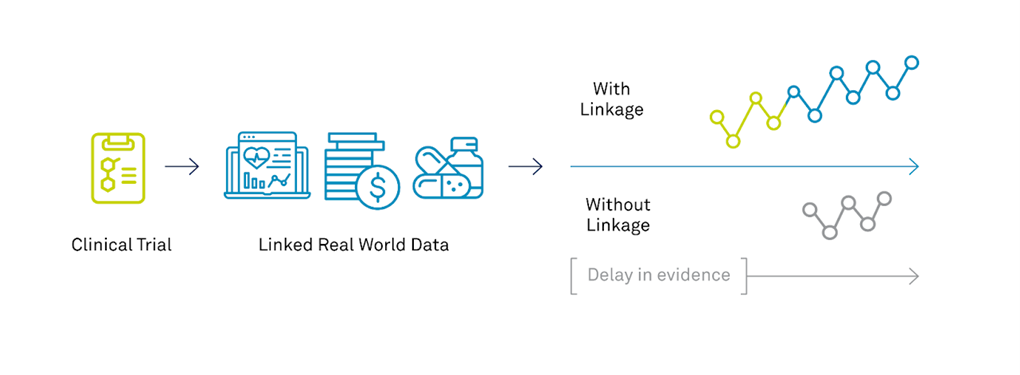How Data Linkage Improves Long-term Safety and Effectiveness Tracking for Biopharma Sponsors

Data linkage—the process of connecting clinical trial data (CTD) and real-world data (RWD) to show a comprehensive view of the patient journey—is shifting the existing paradigm of clinical trials. Whereas CTD and RWD have traditionally existed in silos, a robust data linkage solution helps sponsors overcome these gaps that hinder evidence generation.
With a deeper understanding of patients’ diseases, treatments, and outcomes, data linkage opens up limitless applications for tracking patients lost to follow-up (LTFU), contextualizing patient-reported outcomes, demonstrating treatment effectiveness and cost, and long-term safety monitoring. In the final installment of this four-part blog series, we examine how Medidata Link, the industry’s only scalable data linkage solution, helps sponsors track long-term safety and effectiveness.
The Challenge
Post-authorization surveillance is critical to fully understand the long-term effectiveness and safety profiles of therapies. But sponsors have limited insight into their clinical cohort once the trial concludes because tracking patients is burdensome and expensive. Meeting the regulatory requirements for monitoring safety information is a major concern.
The Solution
- Linking trial patients to their RWD lets sponsors track their effectiveness and safety outcomes even after trial completion. By tapping into routinely collected RWD, sponsors gain deeper insights into long-term outcomes while reducing patient and sponsor follow-up burden.
- Linked CTD and RWD can mitigate patient risk by associating safety signals with efficacy data during extended follow-up to characterize risk-benefit balance across patient subgroups.

Sample Use Case – Infectious Disease (COVID-19)
Although this use case is in infectious disease, tracking patients LTFU has benefits for trials in a wide range of therapeutic areas across the clinical development life cycle.
A large biopharmaceutical company is running an investigational study in COVID-19. The sponsor is struggling to track long-term safety and efficacy endpoints. Due to the unprecedented nature of the COVID-19 pandemic, there is little information about safety and long-term benefit of these novel products. To satisfy regulatory requirements for Emergency Use Approval (EUA), the sponsor needs longitudinal data tracking to meet safety regulations at a massive scale without adding significant follow-up burden.
Sample Approach
- Linked CTD and RWD can help the sponsor monitor patients after the trial concludes to capture their long-term safety and effectiveness endpoints that otherwise would not be feasible to obtain.
- Medidata Link can help the sponsor assess the statistical significance of safety events by estimating event rates while protecting trial fidelity and blinding.
- Leveraging linked CTD and RWD, the sponsor can compare the long-term durability of response and effectiveness of their experimental therapy against the standard of care.
Medidata Link enables the capture of enhanced safety and effectiveness data without adding significant burden. This can augment submissions, improve internal decision-making, and bolster launch-planning activities. Faster and more robust evidence generation is also a key factor for several regulatory scenarios, such as Emergency Use Authorizations, Accelerated Approvals, or Breakthrough Therapy Designations.
Download our eBook for more data linkage use cases to future-proof your clinical trials.
Explore Related Articles
Contact Us


